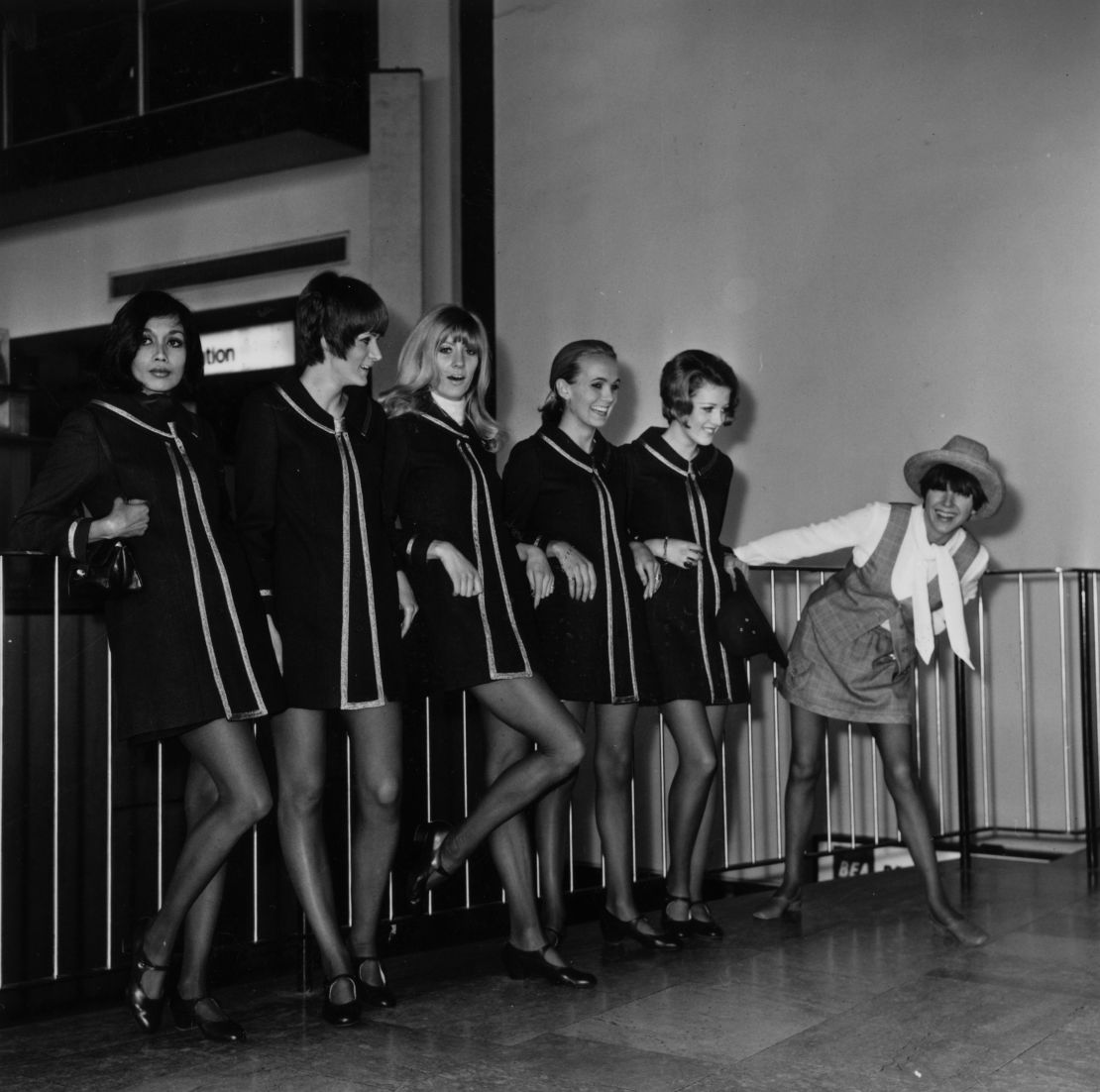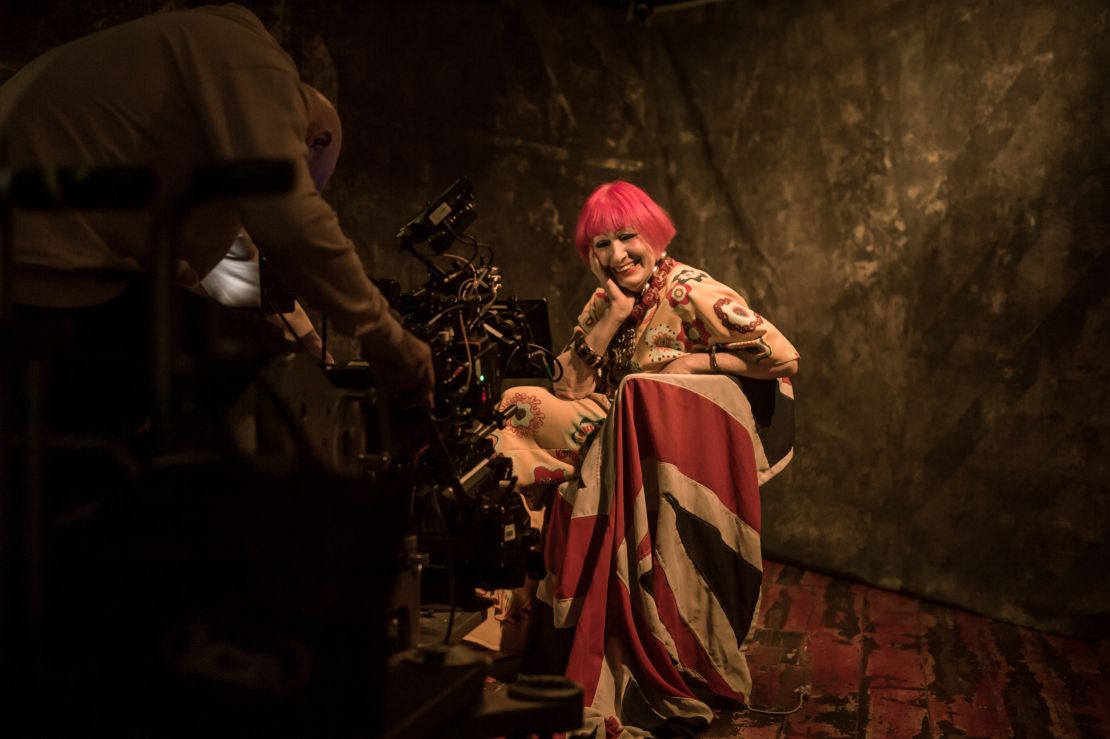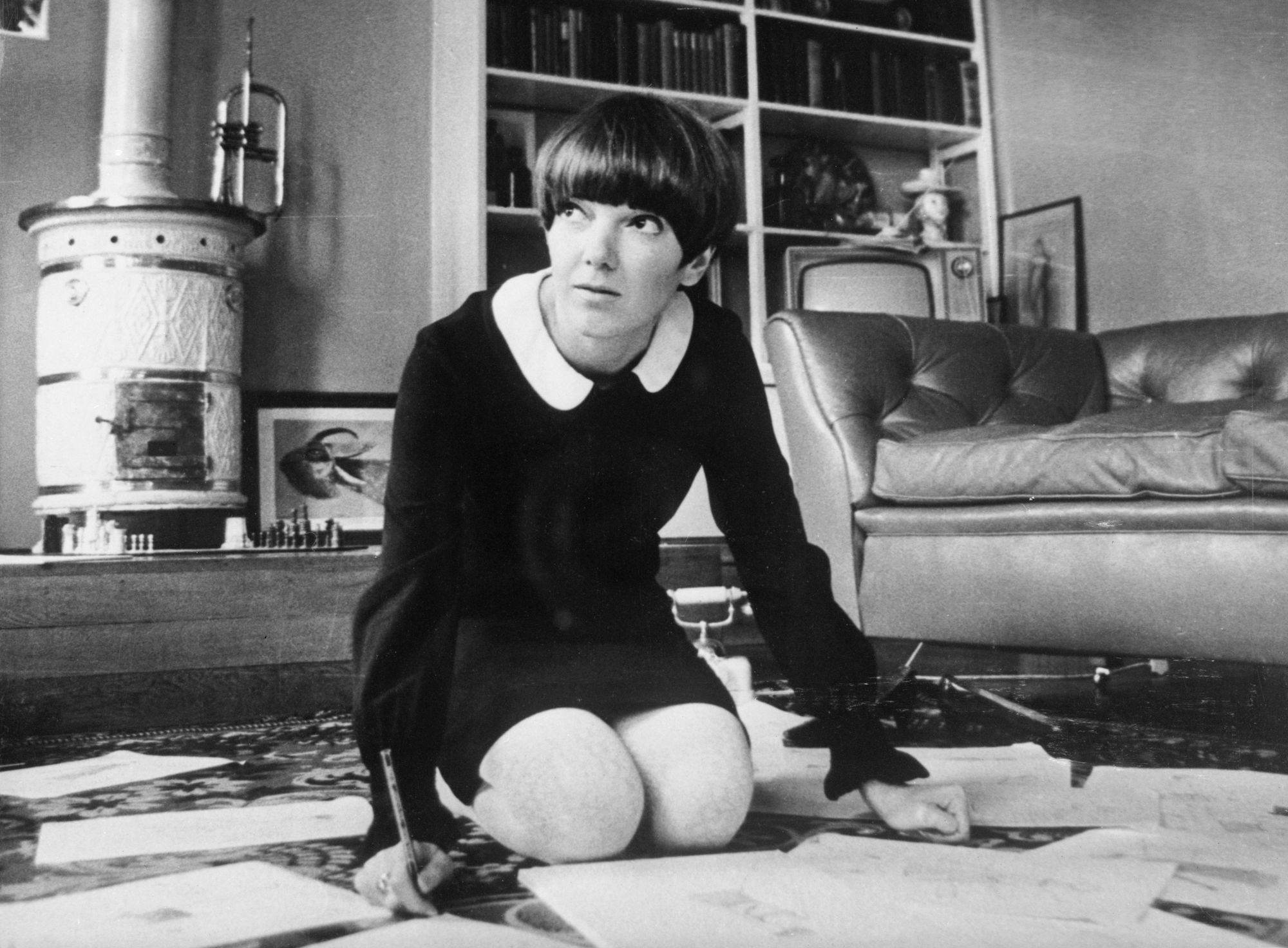Editor’s Note: Keeping you in the know, Culture Queue is an ongoing series of recommendations for timely books to read, films to watch and podcasts and music to listen to.
There’s an exchange in Sadie Frost’s debut documentary, “Quant,” that succinctly captures the essence of the film’s subject – one of the 1960s’ most renowned fashion icons – and the garment she’s best known for.
“Isn’t the miniskirt rather obvious?” a male TV presenter asks British designer Mary Quant. “After all, it seems that few girls have the legs, hips and, above all, the panache to carry it off majestically.”
Appalled, Quant replies: “But who wants to be majestic?”
The line is delivered with the perfect dose of sneering contempt for the man in front of her (and, quite possibly, the male establishment of the time). It’s a mood – and one of the many moments in “Quant” that makes it easy to see how the designer – who is credited with turning the miniskirt into a worldwide phenomenon and launching one of the first global super brands – didn’t just shape a new era in fashion, but also served as a voice for the women of her generation.

Quant’s clothes – as she makes clear throughout the film – were not meant for an elite of “stately ladies” (“We don’t want to look like a duchess,” she says in another clip). Quite the opposite: Spanning short dresses and bright tights, PVC pieces and funky knits, they offered a colorful break from the stiff sartorial codes of the previous decade, including the polished style of Christian Dior’s first collection, the “New Look.”
For women who came of age wearing them, Quant’s designs represented freedom, empowerment, and the rejection of their parents’ aesthetic standards. (In another eminently quotable bit, she is heard saying, “the point of clothes for women should be one, that you’re noticed, two, that you look sexy and three, that you feel good. I can’t see that we wear them to keep warm.”)
“Mary Quant helped change the role of women in society, and encouraged them to express themselves,” Frost said in a phone interview. “There were so many interesting parts of her personality and life, and I was keen to really bring them up through the film.”
Beyond the short skirt
Frost tells Quant’s story through archival footage, animation, and playful reenactments by actor Camilla Rutherford, who replicates the designer’s fun style in a handful of vignettes. The fashion icon herself (now in her early 90s, according to the film) doesn’t appear, though Frost said she’s seen the documentary – and liked it.
“As we filmed during the pandemic, the restrictions made it really hard to sit down with Mary,” Frost explained. “But it was still very important to me to bring her to life on screen, which is why I decided to have Camilla play her younger self. It worked out really well: I think she adds a new dimension to the feature.”
There are also interviews with industry insiders like British Vogue editor Edward Enninful, model Kate Moss and fashion author Terry Newman, as well as with some of Quant’s closest family members – including her son Orlando Plunkett-Greene, who doesn’t appear onscreen – and friends.

But the director has also framed Quant’s enduring legacy within a larger context – that of the “youthquake” that shook the ’60s with music, second-wave feminism and sex (“Quant” explores how the advent the contraceptive pill gave women greater agency over their lives).
Tracking Quant’s meteoric career through such lenses – from the opening of her first boutique in London’s Chelsea neighborhood to the rise of her retail empire, which, at its apex, included not just clothes but also cosmetics, hosiery, shoes and home goods – the documentary places the designer at the head of the era’s cultural shifts, identifying her as a key face of the radical 1960s.
It also spotlights Quant’s lesser-known qualities: Despite her bold collections, the designer was a shy, reserved figure, who got her way through her soft-spoken manner and calm but decisive approach.
“She was an incredibly dynamic character who hasn’t been recognized enough for the role she played,” Frost said. “I wanted to pay her the tribute she deserves.”
A legacy of groundbreaking looks
Whether Quant did in fact invent the miniskirt is a hotly debated topic – the documentary mentions French designer André Courrèges as the possible creator of the garment, while also pointing out that the introduction of “above the knee” skirts was a gradual process.
Regardless, Quant was no doubt responsible for turning the increasingly shorter skirt into the era-defining garment of the 1960s (and coining its name after the Mini Cooper), breaking down social codes in the process.
But she’s emblematic for a number of other groundbreaking looks, too: her very own Vidal Sassoon bob; the “Chelsea girl” coquettish aesthetic; the Peter Pan collars and flat shoes she popularized, inspired by her own wardrobe as a child; the colorful tights, created to complement her bold and bright collections; her use of PVC for outerwear (something that previously had only been worn by fishermen); male knits repurposed as womens’ sweater dresses; and dress pockets.

She was one of the first retailers to branch into licensing (the practice by which a trademark owner, the “licensor,” permits another party, the “licensee,” to use its trademarks in connection with specific products or services), expanding her business worldwide to include cosmetics – waterproof mascaras were unheard of until Quant came along – housewares, dolls and even wine.
Ultimately, however, the breakneck growth proved too hard to sustain. As the sexiness of the ’60s was replaced by the hippie and punk vibes of the ‘70s, and the ‘80s saw a revival of prim, more formal dressing, Quant lost her global appeal. By the late 1980s, her business partner Archie McNair, had retired from the company. Quant’s husband, Alexander Plunket Greene – one of her staunchest supporters, according to the documentary – died in 1990.
In 2000, the designer resigned as a director of her company, Mary Quant Ltd, handing over the reins to the Japanese venture that still holds the licensing agreements for the Quant name. Today, the brand continues to exist only in Japan, where there still are over 100 stores under her name.
“Despite everything, her legacy continues,” Frost said. “Younger people might not even know who she is and how deeply she influenced fashion. But to me, it was important to tell her full story.”
“Quant” is currently out in the UK.
Add to queue: Behind the seams
WATCH: “The September Issue” (2009)
The fashion documentary that made fashion documentaries a thing, “The September Issue” offers a rare look inside American Vogue as the fashion magazine’s influential editor-in-chief, Anna Wintour, and now former creative director, Grace Coddington, work to produce its (once) mammoth September issue. From fashion weeks to endless photo shoots and staff meetings, it’s a memento of a time when print media was still king.
WATCH: “Diana Vreeland: The Eye Has to Travel” (2011)
Directed by one of her granddaughters-in-law, Lisa Immordino, and featuring contributions from more than 60 interviewees, including fashion designers Oscar de la Renta, Diane von Furstenberg and Calvin Klein, “Diana Vreeland” is a fascinating glimpse into the life of the late Harper’s Bazaar and Vogue editor, long recognized as one of the most unconventional women of 20th century fashion.
WATCH: “Iris” (2014)
Self-proclaimed “geriatric starlet” Iris Apfel (who turned 100 this year) is the subject of this fun and tender documentary by the iconic Albert Maysles. Filmed over the course of four years, it’s a window into the flamboyant life of the style maven, but also a story about creativity, inspiration and the true essence of fashion.
WATCH: “Westwood: Punk, Icon, Activist” (2018)
Like Mary Quant, Vivienne Westwood was a catalyst for a new era of British fashion. This documentary offers a comprehensive retrospective of her career, while also looking forward, as Westwood continues to be one of the most influential, unconventional forces in fashion today.
WATCH: “McQueen” (2018)
Combining cheaply shot home videos with archival footage and interviews, this is another great documentary spotlighting one of British fashion’s greatest names. “McQueen” looks at the late designer’s career, legacy and boundary-breaking fashion shows, while also paying tribute to his eclecticism and emotional depth.



